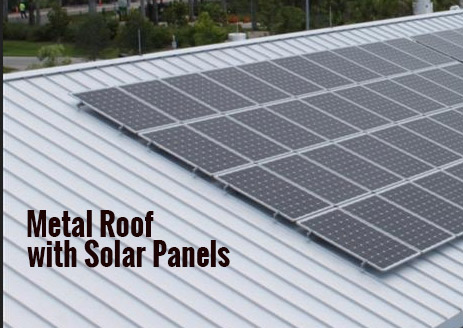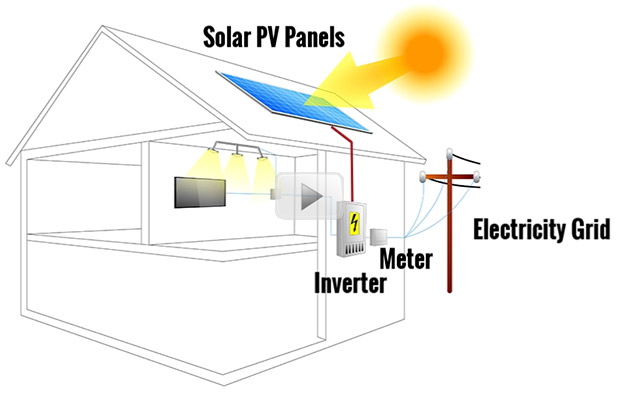Feed-in Solar Tariffs Queensland

- Nov 20, 2015
Feed-in Solar Tariffs Queensland
Feed-in tariffs (FIT) have been created by the Queensland government for electricity generating solar photovoltaic (PV) systems.
It is a way of subsiding renewable energy. Both net and gross feed in tariffs have been introduced by various governments. Queensland uses the net FIT system where electricity produced just offsets the producers usage.
Buy quality and do your research in finding the best tariff from the electricity companies in Queensland. There is plenty of choice available from energy retailers in the South East Queensland area.
Average Electricity Use
The average home uses approximately 6.1MW a year.
This is 16.71 kWh per day.
Video Explaining Feed-In Tariffs in Queensland:
How do Solar Systems work?
- Solar PV modules supply DC power.
- An Inverter changes the solar DC power into 240v alternating current (AC) suitable for your household appliances and feeding into the grid.
- Your home uses power freely from the solar PV modules with additional demand supplied from the grid.
- A meter measures your electricity production and consumption.
- Any excess is "exported" to the electricity grid.
How are Solar Systems Measured?
Understanding kW
Kilowatts (kW) are a measure of electricity usage/generation (e.g. right now your system is producing 2.5kW).
Kilowatt-hours are a measure of cumulative electricity usage/generation over time (e.g. your system produced 7kWh of solar power today, and your home used 16kWh of power to run its appliances.)
When referring to solar PV system capacity, the term kW is usually used - this indicates the 'peak' capacity of the panels or system; real-life production will likely be lower, depending on conditions.
So you can see in the video under the Net Feed-in tariffs most common in Australia based on an 8c/kWh tariff the daily gain in value is approximately $3.
Net Feed-In Tariffs
Almost all FiTs around Australia are now net FiTs. This means a household is only paid for surplus electricity fed into the grid after domestic use is subtracted. If your system produced 3000kWh, for example, and you used 2500kWh of electricity in your home during the day (the time when your PV system was generating power), the rate is only paid for the 500kWh difference.
As an example, if this system was in Queensland, where a net Solar Feed-in Tariff is in place, its owner would earn: 7.04 kWh x 8c/kWh = $0.56 in feed-in tariff income (7.04kWh is the surplus amount of solar energy generated and exported to the grid) as well as save: 9.67kWh x 22.2c/kWh = $2.15 in electricity you would otherwise have to pay for. Giving a total benefit of $2.71.
Warranties and Guarantees
The solar panels with 25-year performance warranties (typically warranting that the panel will still produce at least 80% of its claimed power rating after 25 years) plus a 10 to 12 year warranty for the panels etc itself. An installer may also give warranties for the mounting frame, workmanship and so on.
Choosing a Solar System
(from Choice.com.au)
- Improve the energy efficiency in your home to save up to 30% on your bills. You can do this by turning off appliances, using the dishwasher and washing machine only when full and purchasing energy-efficient appliances.
- Assess what energy you currently use and the system capacity you need (and can afford).
- Check if your roof faces the right direction. Only north-facing panels will produce their full capacity.
- Ensure there are no trees, power lines or other structures shading your roof.
- Find out what local council approval is needed. Increasingly, local councils have staff on hand to assist with making the best decisions on solar.
- Try to figure out your system's payback time.
- Get multiple quotes from installers to ensure you're getting a good deal.
- If you can't afford the upfront costs, consider solar leasing and power purchasing agreements.
- Make sure the installer is accredited by the Clean Energy Council (CEC) and that the panel meets the required standards.
- Check out the CEC guide to installing solar in your home.
Heatwave Reduced Demand due to Rooftop Solar

Solar for Metal Roofs

Metal Roofing experts say a metal roof does not stop you from installing a solar system.
Search News Articles...
Recent Articles

Public Service Cuts
- Mar 11 2025
- /
- 95

Using QR codes for your business
- Feb 24 2025
- /
- 160

What is the Network Effect?
- Feb 05 2025
- /
- 207

Connecting Communities on Twitter X
- Jan 20 2025
- /
- 283

Parasite SEO: the consequences
- Jan 06 2025
- /
- 347

Identifying Misinformation Online
- Dec 20 2024
- /
- 420

How is Metadata used in SEO?
- Nov 21 2024
- /
- 360

Amazon's Role in E-Commerce
- Nov 05 2024
- /
- 334

Australia's Energy Future
- Oct 31 2024
- /
- 562

The benefits of Artificial Intelligence
- Sep 03 2024
- /
- 621
View All News Articles
Categories
A Gold Coast SEO and Web Developer
